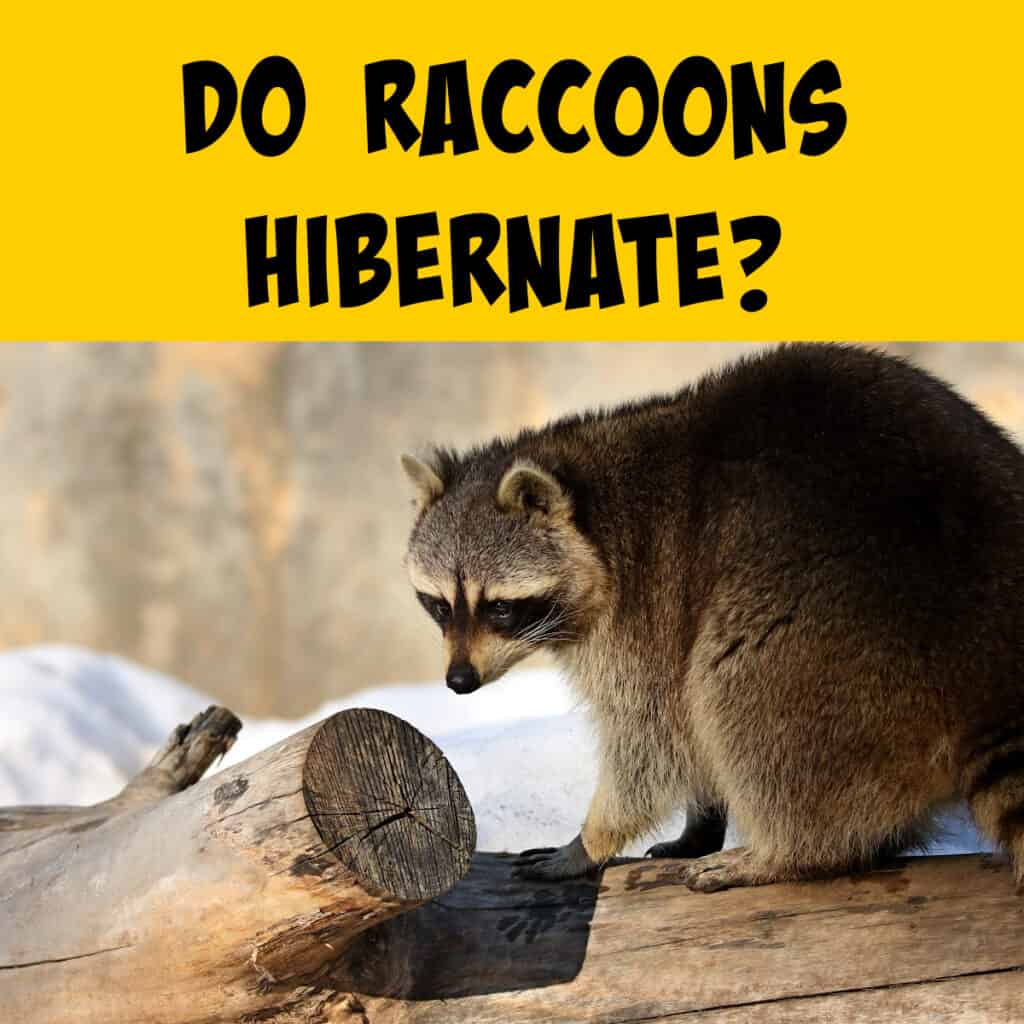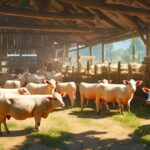As winter approaches, many animals prepare for the cold by hibernating. But what about those masked bandits, the raccoons? Do they also sleep through the winter? The answer is a bit more interesting than you might think!
Unraveling the Mystery of Raccoon Winter Behavior
While you might not see raccoons as often in the winter, they’re not true hibernators. Instead, they’ve developed a clever strategy called torpor to survive the colder months.
What is Torpor?
Think of torpor as hibernation’s less extreme cousin. It’s a state of reduced activity where a raccoon’s metabolism slows down, and its body temperature drops slightly. This clever adaptation helps them conserve energy when food is scarce and temperatures plummet.
But here’s the key difference between torpor and hibernation: raccoons in torpor can wake up on milder winter days, poke their heads out of their dens, and maybe even grab a quick snack if the opportunity arises. They’re not completely out of commission!
How Do Raccoons Behave in Winter?
Raccoons are less active during the winter, but that doesn’t mean they’ve vanished entirely. On days when the weather isn’t too harsh, they might venture out from their cozy dens in search of a meal. You’re less likely to spot them, though, as they’re more cautious and tend to move about during the night.
Speaking of dens, raccoons aren’t too picky when it comes to winter lodgings. They’ll happily bunk down in hollow trees, cozy burrows, or even – much to some homeowners’ chagrin – attics and sheds! These sheltered spots provide insulation from the cold and a safe haven from predators.
Torpor vs. Hibernation: Spotting the Difference
It’s easy to get torpor and hibernation mixed up, but some key differences set them apart. Here’s a handy comparison:
| Feature | Hibernation | Torpor |
|---|---|---|
| Body Temperature | Drastically lowered | Moderately lowered |
| Metabolic Rate | Severely reduced | Reduced |
| Duration | Weeks to months | Days to weeks |
| Arousal | Difficult to rouse | Can be awakened more easily |
| Examples | Bears, groundhogs | Raccoons, opossums |
Why Is It Important to Understand Torpor?
Learning about how raccoons adapt to winter isn’t just fascinating; it’s also important for us:
- Peaceful Coexistence: Knowing when raccoons are most active (or inactive) helps us avoid unwanted encounters and maintain a respectful distance.
- Effective Wildlife Management: Understanding torpor patterns gives conservationists valuable insights into raccoon populations and helps guide their efforts.
- Deeper Appreciation for Nature: The more we learn about the amazing adaptations of animals like raccoons, the more we can appreciate the wonders of the natural world.
Do Raccoons Hibernate in Winter in Canada?
Given Canada’s often-brutal winters, you might wonder how raccoons handle the cold north of the border. The answer, once again, lies in their remarkable ability to enter torpor.
Even in Canada, raccoons don’t truly hibernate. Instead, they rely on torpor to weather the harshest months. Their metabolism slows, their body temperature drops, and they become less active, conserving precious energy when food is hard to come by.
But why don’t they hibernate like their bear neighbors? Raccoons simply aren’t built for it. Unlike bears, which pack on significant fat reserves to survive solely on stored energy, raccoons need to rouse themselves periodically to forage for food and water.
You’re less likely to see raccoons out and about during a typical Canadian winter, but you might catch a glimpse of them on milder days. They might emerge from their dens – often located in trees, burrows, or even attics – to search for a quick meal. These opportunistic omnivores will eat just about anything they can find, from scraps in your garbage to birdseed.
Why Do Raccoons Seem To “Freeze”?
You might have heard that raccoons “freeze” during the winter. While it might look that way, it’s not freezing in the literal sense. Instead, their deep state of torpor can make them appear lifeless.
When a raccoon enters torpor, its breathing slows down dramatically, and its body temperature drops significantly. This can make them seem stiff and cold to the touch, almost as if they’re frozen solid.
However, rest assured, they are very much alive! They can wake up from torpor, especially if the temperature rises or if something disturbs them. This ability to quickly shift in and out of torpor is crucial for their survival, allowing them to take advantage of opportunities for foraging or to escape from danger.
Scientists are still unraveling all the mysteries of raccoon torpor. It’s a fascinating area of ongoing research, and we’re constantly learning more about how these adaptable creatures survive the challenges of winter.
So, the next time you see a seemingly “frozen” raccoon, remember – it’s probably just taking a long winter’s nap, expertly conserving its energy until warmer days return.
Find out if raccoons can become infected with do raccoons have rabies and learn how dangerous they can be when infected. To avoid interacting with dangerous pests like wasps, let’s help you identify different breeds of wasps in your area and the appropriate ways to handle an encounter with them.
- Revolution Space: Disruptive Ion Propulsion Transforming Satellites - April 24, 2025
- Race Through Space: Fun Family Game for Kids - April 24, 2025
- Unlocking the Universe: reading about stars 6th grade Guide - April 24, 2025
















